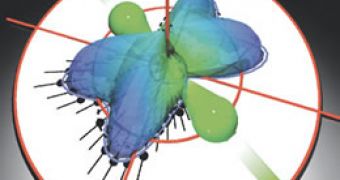Electron correlation is a relatively new concept and it deals with mutual dependence between electrons, summarizing the effects of the repulsion forces acting in the spaces between electrons. It specifically handles the way this repulsion influences the spatial and dynamical motion of the electrons.
The concept is similar to the behavior of people on the busy streets or in a crowded marketplace. Like electrons, people too have to avoid each other if they don't want to bump into one another. This influences the way people behave and move around, much like the electrons' movements.
Paris Dieter Vollhardt, professor of theoretical condensed matter physics at the University of Augsburg in Germany developed a new theory, called dynamical mean-field theory that deals with weakly interacting and strongly localized models alike.
One of the steps in the theory imagines the material in a higher dimension space and then approximates an infinite number of dimensions, which can greatly simplify calculations and lead to more accurate predictions.
These intriguing electronic correlations could have spectacular effects in practical applications. For instance they could lead to materials that change from being an electrical insulator to a highly conductive compound, or other materials that can be made to display high-temperature superconductivity and colossal magneto-resistance.
The theoretical technique can help the scientists to better understand and predict the behavior of new materials, since there are many of them showing a lot of potential in technology, but impossible to describe in theory.
An example would be the high-temperature superconducting materials and some high-density magnetic storage materials that are still not well understood.
So far, this theory has proven its prediction abilities in many correlated electron materials, in particular to transition metals and their oxides.

 14 DAY TRIAL //
14 DAY TRIAL //